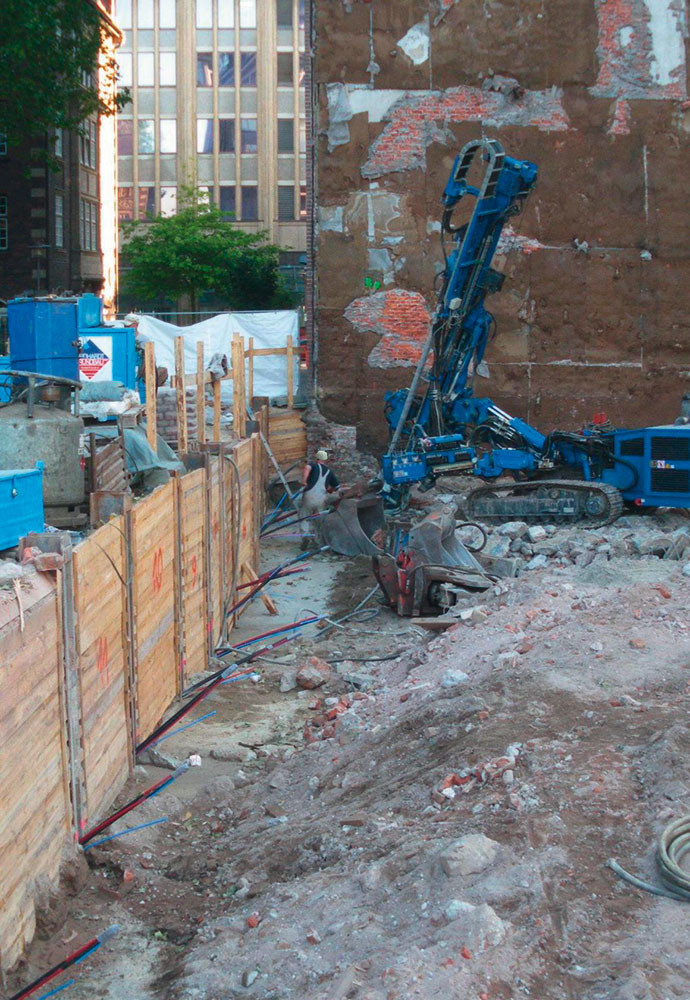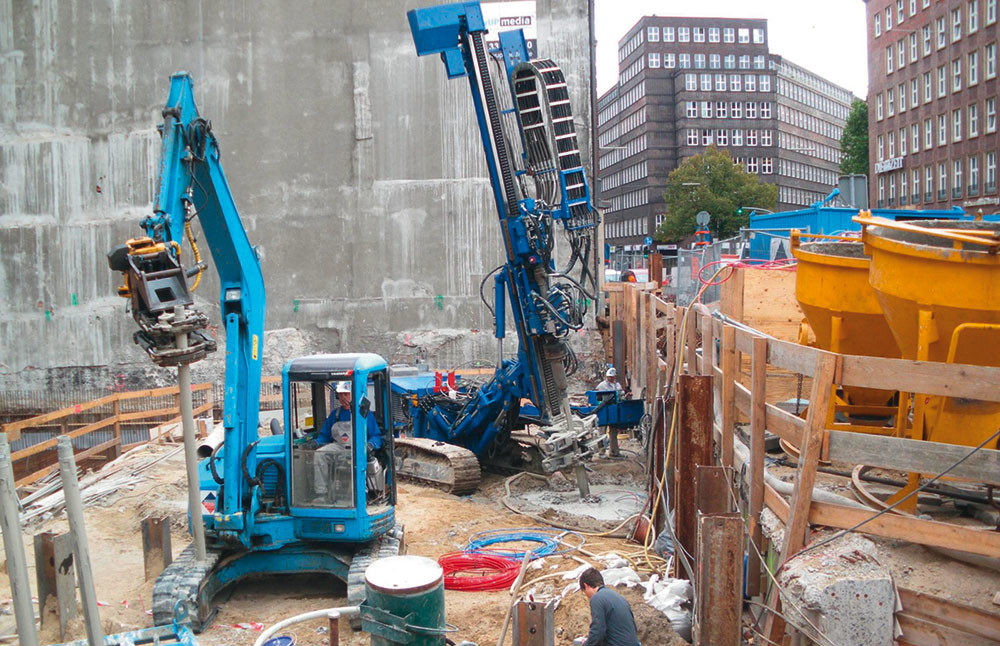St. Petri-Hof, Hamburg
Literally right in the heart of one of Hamburg’s main sanctuaries, the stepwise expansion of the St. Petri area was planned. This is because it was exactly here, next to the city’s oldest parish church, the St. Petri Church, where the 22 m tall “Bishop Tower” used to throne above the vast tidal wetlands nearly one millennium ago offering protection to refugees of all kinds. After having been demolished in the 13th century, its grounds, at last, accommodated the building of the broadcasting station “Radio Hamburg”, which is now supposed to give way to a modern office complex. Our job in this endeavour was to create the deep foundations for the new building as well as to temporarily secure the surrounding building pit walls.
Located in a high density urban environment, the foundation bottom was produced inside of a building pit measuring 4 m in depth. For this purpose, a steel beam plank wall was constructed and tied back with 24 of our grout anchors before the pit could be excavated to its maximum depth (see Image 1 ). With our drill works completed in a matter of two days, this part of our job was mere routine.
However, the second part, which included the planning and execution of the necessary deep foundations, proved to be much more difficult since the still existing structural remains of the “Bishop Tower” with its 19 m outer diameter and its 4 m thick walls consisting of 1m3 boulders needed to be preserved to the best extent possible, so they could be made accessible to the public for exhibition purposes after completion of the project. Nonetheless, even the greatest efforts to leave the historic building blocks unaffected could not entirely avoid the necessity to set single foundations right within these old structures. In the end, ten single foundation blocks and strips were erected, most of which were placed right around the perimeter of the old tower, and each of them was secured with 4 to 8 of our micropiles.
With the drill points situated 3 m below the work platform, elaborate measurement efforts were undertaken in order to guarantee precise pile placement. In addition, our drill suspension had to be retained and disposed of separately in order to avoid any cement from contaminating the old tower remains. Therefore, unlike for the anchor production we decided to conduct our drill works for the pile production using an overburden drilling technique (see Image 2). The already rather confined position of the building pit placed additional restrictions on our ability to manoeuvre our machines and equipment since our work platform was reduced to a second level within the building pit. But thanks to the commendable cooperation among all participants we were able to master all these challenges and contribute our part to manage the difficult split between creating modern architecture and maintaining an important cultural heritage site.
System: | Gewi - pile / steel diameter 63,5 mm , as well as Suspa - DSI strand anchor with 2 - 4 strands |
|---|---|
Amount: | 59 + 24 pieces |
Length: | 10 - 23,50 m |
Test load: | up to 860 kN |
Drilling technology: | single head percussive flush drilling and overburden flush drilling with 2 secondary injections |
Execution period: | May to September 2009 |

